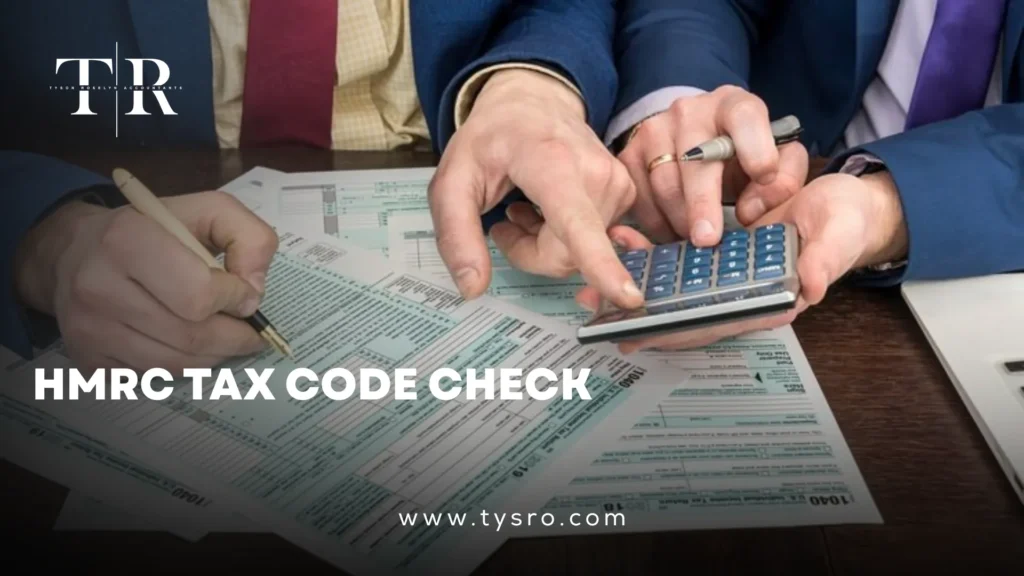Introduction
Ever glanced at your payslip and noticed a strange combination of numbers and letters like 1257L or BR? That little code is more important than you think. It directly affects how much income tax you pay—and getting it wrong could mean overpaying or even facing a surprise tax bill.
This HMRC Tax Code Check guide for 2025 will break it all down in plain English. We’ll explore what a tax code is, how to check it, why it matters, and what to do if it’s wrong. We’ll even walk through a real-life scenario to help everything make sense.
Why Your Tax Code Actually Matters
Chris, a 28-year-old sales executive in Birmingham, switched jobs early in the year. Months later, he realized he was taking home much less than he expected. On a colleague’s advice, he ran an HMRC Tax Code Check online and discovered he was on an emergency tax code which meant he was taxed as if he had no personal allowance at all. After contacting HMRC and correcting the issue, Chris received a refund of over £1,000.
This could happen to anyone. Your tax code is more than a string of characters—it’s how HM Revenue & Customs (HMRC) tells your employer or pension provider how much tax to deduct. A mistake could cost you hundreds.
What is a Tax Code?
Your tax code is issued by HMRC and reflects how much tax-free income you’re entitled to in a given year. It helps determine how much Income Tax should be deducted from your salary or pension.
For most people in 2025, the tax code will be 1257L, which means:
- You’re entitled to the standard £12,570 personal allowance.
- You qualify for the standard tax deductions with no special circumstances.
Other common codes include:
- BR – Basic Rate, used for second jobs or pensions where no personal allowance is applied.
- D0 / D1 – Higher or additional tax rate applied.
- K Codes – Indicate you owe tax from previous years or receive untaxed income like company benefits.
You can find a full explanation of each code on GOV.UK.
Where to Find Your Tax Code
To start your HMRC Tax Code Check, first locate your code. You can find it on:
- Your payslip
- Your P60 (end-of-year tax summary)
- Your P45 (if you left a job)
- Your HMRC Personal Tax Account (we’ll cover this next)
Step-by-Step: How to Do an HMRC Tax Code Check
It only takes a few minutes to check your tax code properly. Here’s how:
Step 1: Log Into Your HMRC Personal Tax Account
Visit the GOV.UK personal tax account page. Log in using your Government Gateway ID. If you don’t have an account, you can register it’s free and only takes a few minutes.
Step 2: View Your Tax Code for 2025
Once logged in, you’ll be able to view:
- Your current tax code
- Details of your income sources
- Any benefits in kind you receive (like company car, medical cover)
- How HMRC calculated your tax
Step 3: Check for Errors or Outdated Info
Ask yourself:
- Have I changed jobs recently?
- Am I receiving a company benefit or pension?
- Do I have more than one income?
- Was there a tax underpayment last year?
If the answer to any of these is yes, it’s worth double-checking that your HMRC Tax Code Check reflects these changes.
Step 4: Understand the Code
Break the code down:
- The numbers reflect how much income you can earn tax-free.
- The letters tell HMRC how to apply the code (e.g. L, M, N, BR, K).
There’s a full guide to tax code letters here.
Step 5: Contact HMRC If Something’s Off
If you notice your code is wrong or outdated, contact HMRC via your online account or by phone using the HMRC helpline. Provide your National Insurance number and recent income details to speed things up.
What Causes Tax Code Errors?
There are several reasons your code might not be right:
- Job changes (especially within a tax year)
- Multiple jobs or pensions
- Untaxed income (freelance, investments, etc.)
- Company benefits like cars or medical insurance
- Marriage allowance transfer
- Student loan repayments
- Tax debts or adjustments from previous years
Many people are on the wrong code without even realizing. Regular HMRC Tax Code Checks help you stay on top of it.
What Happens if You’re on the Wrong Tax Code?
If your tax code is too low, you might:
- Overpaid tax and am due a refund
- Face lower take-home pay unnecessarily
If your tax code is too high, you might:
- Underpay tax, leading to a bill later
- Get put on an emergency or temporary code like W1 or M1
The good news? HMRC will usually adjust things through your future pay if they find a mistake. But it’s always better to spot issues early and act before it snowballs.
Tools to Make Life Easier
Here are a few reliable tools to help with your tax code journey:
- Check Your Tax Code Tool
- Personal Tax Account Login
- Tax Code Breakdown – Money Helper
- Contact HMRC
These resources are all official and free to use.
How Often Should You Do a Tax Code Check?
At least once a year—or whenever you:
- Change jobs
- Start receiving a pension
- Add or remove work benefits
- Start freelancing or earning from a side hustle
- Receive a letter or email from HMRC about a code change
The start of the new tax year in April is a perfect time to double-check everything.
Real Talk: It’s Your Money
Imagine finding an extra £800 in your account because of a tax refund. That’s what happened to Leanne, a part-time teacher from Bristol. She’d been using the wrong tax code for two years. One quick HMRC Tax Code Check turned everything around.
FAQs
What is an HMRC Tax Code?
An HMRC tax code is used to tell your employer or pension provider how much Income Tax to deduct from your earnings. It reflects your personal allowance and any adjustments based on your individual circumstances.
What does a 1257L tax code mean?
This is the standard tax code in 2025, indicating a £12,570 personal allowance with no special deductions.
Can I be on the wrong tax code?
Yes, especially after changing jobs or having multiple incomes. A regular HMRC Tax Code Check is essential.
How often should I check my tax code?
You should do an HMRC Tax Code Check at least once a year—especially at the start of the tax year in April, after switching jobs, or if your income changes.
What happens if I’m on the wrong tax code?
You may end up overpaying or underpaying tax. Overpayments can usually be refunded, but underpayments might lead to a surprise bill from HMRC.
Conclusion
Your tax code might look like a random string of letters and numbers, but it holds real power over your paycheck. Whether you’re a full-time employee, a pensioner, or juggling multiple jobs, doing a regular HMRC Tax Code Check can help you avoid overpaying or underpaying tax—saving you time, stress, and money. If you’re unsure about your current code or need professional guidance, firms like Tysro Roselyn Accountants can help review your tax situation and ensure everything is accurate and up to date.


